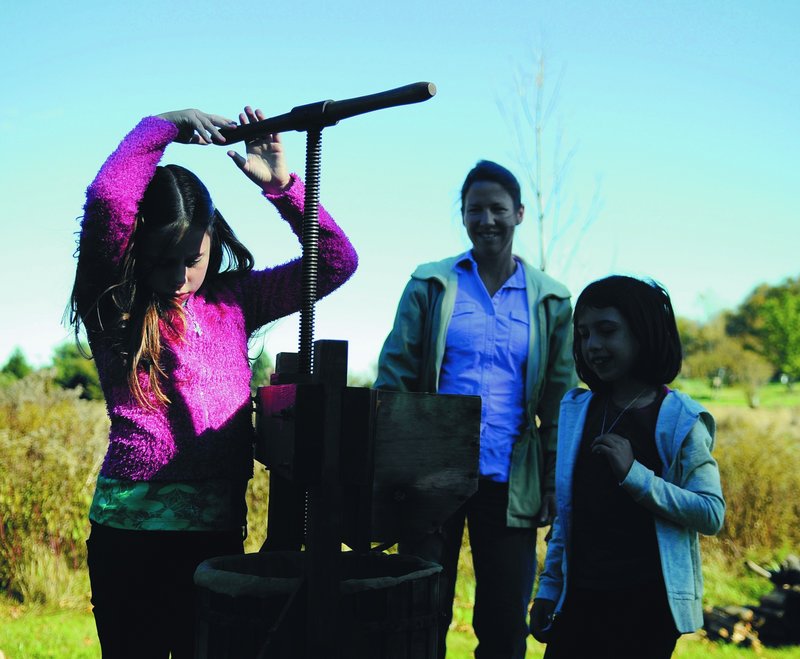AUGUSTA — When it comes to picking apples to press into cider, sweeter is not better.
“You don’t want to use a sweet apple for cider,” said Jay Adams as he turned a wheel to grind apples into bits. “The fermenting process makes it sweet.”
Adams, executive director of the Viles Aboretum, hosted a cider-pressing workshop for the public on Monday. Apples, mostly McIntosh donated by orchards in the area, were ground on a hand-powered mill that Adams built from a kit more than 20 years ago.
“If we really had an 18th-century press here, it would be much bigger and horse-powered,” Adams said.
While McIntosh apples are sweet, Adams pointed out that the people who turned out for the workshop were not really making cider.
“Strictly speaking, what we’re doing is making apple juice,” Adams said. “It’s not cider until it ferments.”
The clear, cool day helped create the ideal mood for cider-making.
Leah and Geneva Smith, ages 7 and 9, who attended the workshop with their parents, Mike and Jodi Smith of Gardiner, delighted in turning the grinding wheel and then turning the press to force out the juice.
The process starts, naturally, with apples, which are cut in half and tossed into a hopper. A wooden cover is placed over the hopper as the grinder is turned. The ground bits then fall into a small half-barrel made of wooden slats. The slats are covered by a cheesecloth-like material that allows the juice to pass when the apple bits are pressed.
The press squeezes down on the apples as the handle is cranked, forcing juice through the cloth and barrel slats onto a wooden tray below the barrel.
The juice then trickles through holes in the tray into a container below.
Adams gave a history lesson of apples and cider-making as he oversaw the pressing. For instance, all of the apple varieties we know about originated in someone’s cider orchard.
“Every McIntosh apple has one tree way back as its parent,” Adams said.
Each apple seed carries every gene. That means if you plant a McIntosh seed, you could get virtually any variety of apple tree.
“It doesn’t retain the characteristics of its parents,” Adams said.
Specific varieties can be replicated only by grafting branches onto trees.
The arboretum has two orchards, one with apple varieties developed in Maine, the other filled with seedling trees from Kazakhstan, the apple’s original home.
“In Kazakhstan, they have whole forests of wild apples,” Adams said.
Copy the Story Link
Send questions/comments to the editors.



Success. Please wait for the page to reload. If the page does not reload within 5 seconds, please refresh the page.
Enter your email and password to access comments.
Hi, to comment on stories you must . This profile is in addition to your subscription and website login.
Already have a commenting profile? .
Invalid username/password.
Please check your email to confirm and complete your registration.
Only subscribers are eligible to post comments. Please subscribe or login first for digital access. Here’s why.
Use the form below to reset your password. When you've submitted your account email, we will send an email with a reset code.